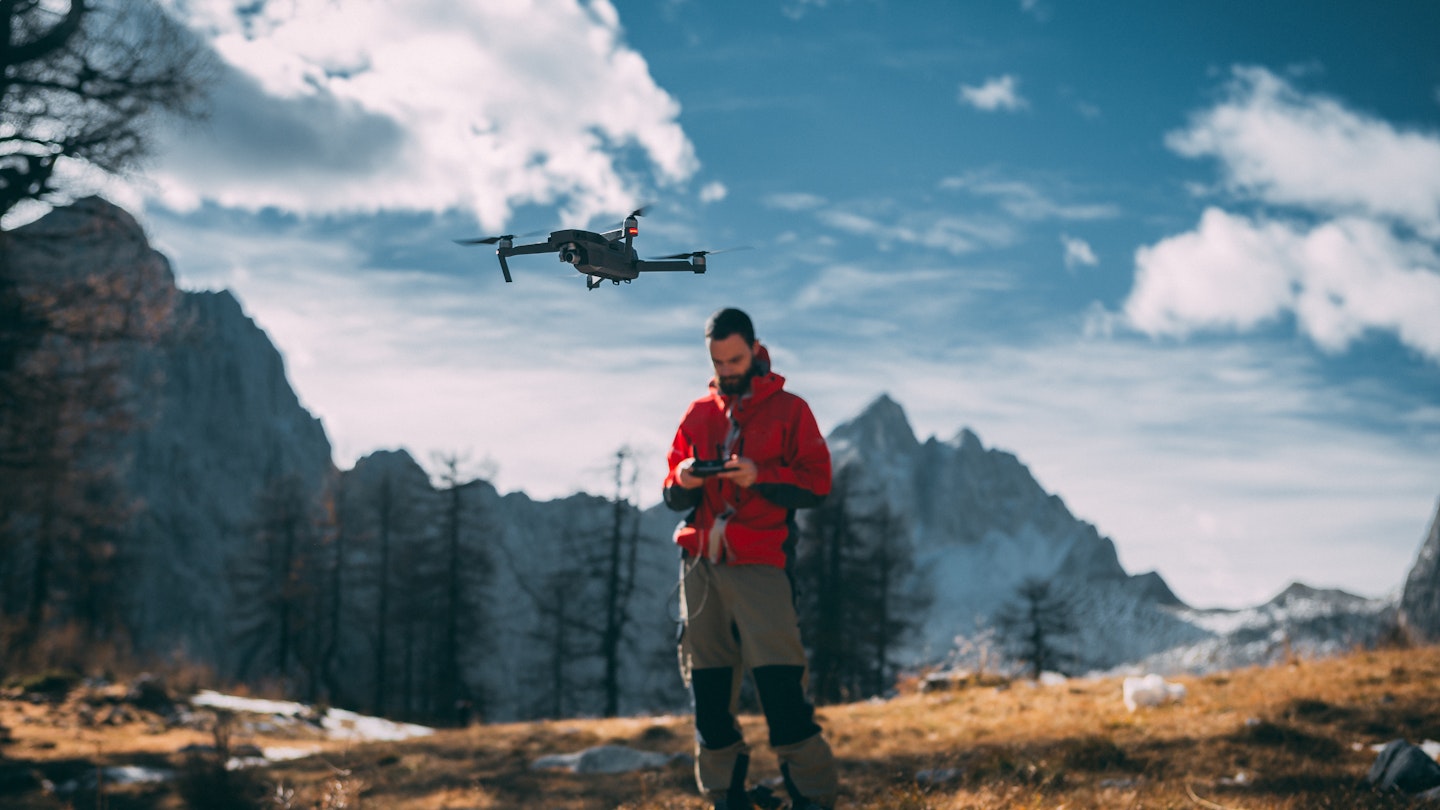No longer just a tool for licensed professionals or a hobby for the wealthy, high-quality drones are now sold at most electronics stores and can be more affordable than a camera without the wings.
However, as drone photography reaches new heights (pun intended), so do reports of incidents from amateur drone pilots wreaking havoc.
Beyond the slick appeal of game-changing photography, ensure that you have a masterful understanding of the red tape, compliance concerns, and aviation guidelines in place to make safety your priority.
So before you throw your drone (not your caution) to the wind, use this guide to get you cleared for take-off.

How to Travel with Your Drone: Understanding TSA’s Drone Policy
TSA’s drone policy primarily defers to individual airlines’ guidelines when it comes to traveling with drones, either in-cabin or in checked luggage. TSA’s primary concern is with your drone’s battery: lithium batteries, fuel cells, and components of certain parachute systems may be prohibited in baggage.
As most commercial drones are relatively small, after checking your airline’s policies, you are likely able to pack it in your carry-on or checked luggage. Larger specialist drones may exceed the dimensions for carry-on, particularly when in their protective cases.
It is good practice to keep expensive equipment in a carry-on case as you have more control over how it is handled. Likewise, always pack batteries in a carry-on bag, ensuring they are stored in a pressurized environment where the temperature is less likely to fluctuate. Most commercial drone batteries are under 100 Wh (watt-hours), but it’s prudent to verify this with your airline’s rules just in case.
Always consider the airport security practices for any country you’re transiting through. When traveling with your drone through customs, remember that laws vary from country to country, and some places outright ban drones. If you’re heading to a country with strict drone laws, it’s advisable to leave it at home to avoid fines or confiscation.
Can You Carry a Drone on an International Flight? Drone Regulations Worldwide
As unmanned aerial vehicles (UAVs) become more common, policymakers face challenges in keeping up. While numerous countries have established laws for drones, others lack comprehensive regulations. Guidelines can vary, including the maximum altitude for flights, where drones are permitted, the distance from structures, and the necessity of identity tags. Generally, UAVs should only be flown while visible to the pilot.

Stay Informed on Drone Laws and Regulations
Leading drone manufacturers provide resources to keep users up to date on local drone laws by country. Moreover, the Global Drone Regulations Database offers a search function that reveals recent updates. In the United States, authorities allow tourists to fly drones under the Federal Aviation Administration (FAA) guidelines.
The most critical guideline to remember: never fly a drone within a 5-mile radius of any airport.
Always research flight clearance at your intended flight destination before you arrive since rules and ordinances can vary by city and state and change frequently.

The 3 Best Apps for Drones: Mapping, Forecasting, and Photography
B4UFly: An FAA-sponsored app for recreational drone pilots detailing where flying is permitted in the US. This resource compiles all airports in the US and provides air clearance options via a text messaging system based on your location.
UAV Forecast: This app offers a real-time log of local weather conditions, helping to gauge wind, visibility, and precipitation.
PhotoPills: Once you’re ready to fly, this app serves as an incredible resource for lining up the perfect shot.
Why Your Drone’s Weight Matters
Drones over 0.55 lbs (0.25 kg) should be registered with the FAA, which also provides further information on policy and usage. A flying limit of 400 feet high is enforced, and pilots should avoid flying over crowds. Beginners should consider compact drones under this weight to simplify entry into aerial photography.
Regulations also differ globally. In Canada, there’s a strict height limit of 295 feet (90 meters), while keeping at least five kilometers away from airports, airfields, and aircraft is mandatory. Additionally, Italy allows drones under strict conditions, such as not flying at night and maintaining low altitude restrictions, while Japan mandates a minimum distance from people and structures.

Can You Fly Drones in US National Parks?
Drones are not permitted for either recreational or commercial use in US National Parks or National Forests. In general, state parks permit drones unless stated otherwise through posted orders.
Be Aware of No-Drone Zones
While countries maintain varying regulations regarding height and location, some places completely prohibit drone usage. These include:
- Algeria
- Cuba
- Morocco
- Nicaragua
- North Korea

Further, some countries maintain strict or unclear drone regulations, making flying not recommended until policies are clarified. These include:
- Barbados
- Côte d’Ivoire
- Egypt
- Iran
- Iraq
- Kuwait
- Kyrgyzstan
- Madagascar
- Saudi Arabia
- Senegal
- Syria

Best Practices for Using Your Drone on Vacation
Many official rules and regulations for piloting drones overlap with practical tips to keep you and your equipment safe. As a general rule, always keep your aircraft in sight, as it can become damaged or even crash. Consider the local wildlife and nature, researching potential endangered or protected species in the area.
Privacy is another significant factor to consider. Drones can provide access to hard-to-reach areas that should remain free from prying eyes. As a courtesy, respect others’ personal space, particularly around apartments, buildings, and public areas like beaches. Additionally, never fly your drone near military bases or private properties. A wide-open patch of land does not automatically grant you free flight—ensure you have the proper licenses and clearances at all times.
Lastly, recreational drone use is just that: recreational. If you begin to monetize your drone skills, you must obtain the necessary clearances, licenses, and approvals. Maintaining at least 5 miles distance from airports is crucial, as drones can interfere significantly with air traffic.





